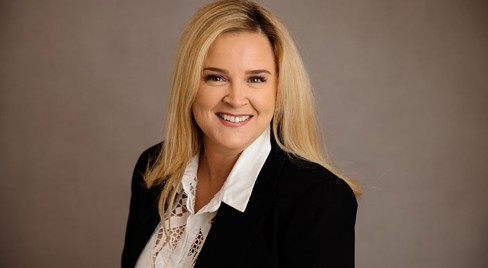R&D tax credits are a great way for companies to fund their innovative work, giving you up to money back on your research and development expenditure. Companies can access this cash back if they can prove they meet the scheme's requirements.
Proving that your company has a valid claim means submitting an Additional Information Form with company and project information and costing details. Many claimants will also send a technical report to back up the claim that anticipates any questions asked by HMRC.
Why Prepare a Technical Report?
A full technical report is essential for ensuring compliance with HMRC; if you receive the dreaded letter through the door and have to scramble to answer HMRC’s compliance check at the last minute, you’ll regret not preparing your full report when it was fresh in your mind.
The technical report usually includes a little more information than what is required by HMRC for a submission. Compliance checks from HMRC will ask for more details than the basics that are provided in your AIF.
Having these extra details ready in advance makes any potential compliance check much less stressful. It’s also helpful to have these extra details in preparation for your next claim.
What Information Is Required?
The questions of the AIF which are required are as follows:
- What is the main field of science or technology?
- What was the baseline level of science or technology the company planned to advance?
- What advance in that scientific or technological knowledge did the company aim to achieve?
- What were the scientific or technological uncertainties that the company faced?
- How did your project seek to overcome these uncertainties?
- Which tax relief you’re claiming for and the amount?
However, we recommend that you gather further information, such as a brief description of the project’s commercial goals, dates for the R&D project, details of the competent professionals working on the project and their qualifications and a list of the evidence and documentation that is available to prove the R&D activity occurred.
Field of Science or Technology
This field can be relatively short, with a brief sentence to identify the wider domain. For a software project, this may be as broad as “Information Technology”, or more specific like “cybersecurity”, or even more specific like “cryptography”.
Baseline Level of Science or Technology
This should describe the state of the art before your development began. You should have researched the standard approaches and be able to concisely explain the limits of science and technology when it comes to reaching your project goals.
For example, in a project where you seek to develop a new pharmaceutical drug, you should explain the existing solutions that treat the disease, their limitations, and what kind of research you did to establish this.
Advance in Scientific or Technological Knowledge
Your project must seek to advance the field of science or technology. This can be through developing a new product, process or service or improving an existing one. The important thing is that you advance the wider field through your development, not just your company’s knowledge.
Having already detailed the baseline knowledge, you should be able to reference how you were trying to improve upon this baseline. For example, developing a drug that can treat a disease in a new way would be eligible, as would improving existing drugs by making them faster to manufacture, cheaper or more effective.
Scientific or Technological Uncertainties
Your project must seek to resolve scientific or technological uncertainty. This means that experts in the field did not easily solve the uncertainty. You should have researched the obvious or standard methods and established that they do not work.
In the AIF, briefly describe what kinds of difficulties you faced when trying to reach your goal; there may be more than one. You should also explain why it wasn’t obvious how to resolve it.
For example, in a project seeking to develop a faster manufacturing process, you may need to explain how the machine operated at its limits with the power source, the hardware used, or the wider ecosystem it was a part of.
Experimental Development
The experimental activities conducted to overcome the technical uncertainties must also be explained. You should include information about experiments conducted and their results. This includes brief details of the prototypes, simulations, or trials undertaken. Where these failed, you should explain why and what your modifications were. Try to write about the development work done as a narrative; there is no need to include exact examples of the work (i.e., do not include code extracts).
The more failures, the better, as this demonstrates that the work done was uncertain and unknown to you. Technical details do not need to be in-depth, but it should be clear to HMRC that you are familiar with the tools and technologies of the trade.
Preparing R&D Tax Technical Reports
We always recommend preparing more information than the required details above; it’s important for compliance, but it’s also a useful internal tool for project tracking. In fact, Tax Cloud guides you to prepare more than the bare minimum with its questions, and you’ll always have our experts checking that your details are sufficient before submission.
When preparing a technical report, there are best practices to follow to ensure you’re compliant, while reducing the level of work you have to do.
Get the Right Number of Reports
If you have multiple projects, it’s important to know how many projects you need to write up, not only to meet the scheme's requirements but also to avoid spending time writing up unnecessary projects!
Claims with one, two or three projects must be written up in full; all your projects must be covered in the AIF and in any technical report you send to HMRC.
With more than three projects, you must write up at least three of them that cover 50% of the costs you’re claiming. If you have over 10 projects, you must write up the ten largest.
If you need some support tracking your projects, claim your free download of our Project Tracker here.
Involve Multidisciplinary Teams
Engage a team with diverse expertise, including technical specialists and tax professionals. Everyone in the process should be largely aware of the technical and tax requirements for making a valid claim.
Your technical team will be able to write up a far more accurate technical report, having actually worked on the projects, so will likely take on the lion’s share of the work when it comes to your technical report.
Your finance team will obviously be best placed to gather and analyse your eligible costs, although some input will be needed from the technical team to establish the amount of work each team member did on each project. However, they will be needed to work out how many technical reports are required and to submit the actual claim via HMRC’s portal.
Maintain Ongoing Documentation
Maintain continuous documentation throughout the project lifecycle to avoid the rush of compiling information weeks before the deadline. Starting the claim as early as possible or maintaining clear notes during the period saves you from trying to remember the details of the work done nearly three years later.
Focus on Clarity and Precision
Ensure that your report is clear and concise, as it will be read by HMRC’s R&D tax team who are not experts in your field.
Many claimants focus on describing a project's commercial novelty. However, HMRC is not interested in the market, your competitors, or your customers; it only wants to see that you have improved upon the state of the art through the resolution of scientific or technological uncertainty.
Stick to technological descriptions of your product, and in layman’s terms wherever possible.
Seek Professional Advice
Consult with R&D tax credit specialists and advisors, such as Tax Cloud, who can provide expert guidance and help navigate the complexities of the claim process. Their experience can be invaluable in preparing a robust report and avoiding common pitfalls.
Not only will they be able to advise on length, tone and subject matter, an expert advisor will be able to review your costs and submit your claim to HMRC on your behalf.
Questions? Get in touch!
Preparing robust R&D tax technical reports is critical for companies looking to leverage tax incentives for their innovative projects. By understanding the requirements, maintaining detailed documentation, and following best practices, businesses can maximise their claims and avoid time-consuming and potentially costly compliance checks.
Benefiting from expert guidance through portals such as Tax Cloud will offer you peace of mind when navigating these strategies effectively, ensuring you save the maximum amount.
If you have questions, contact us – we’re always happy to chat R&D tax credits.







